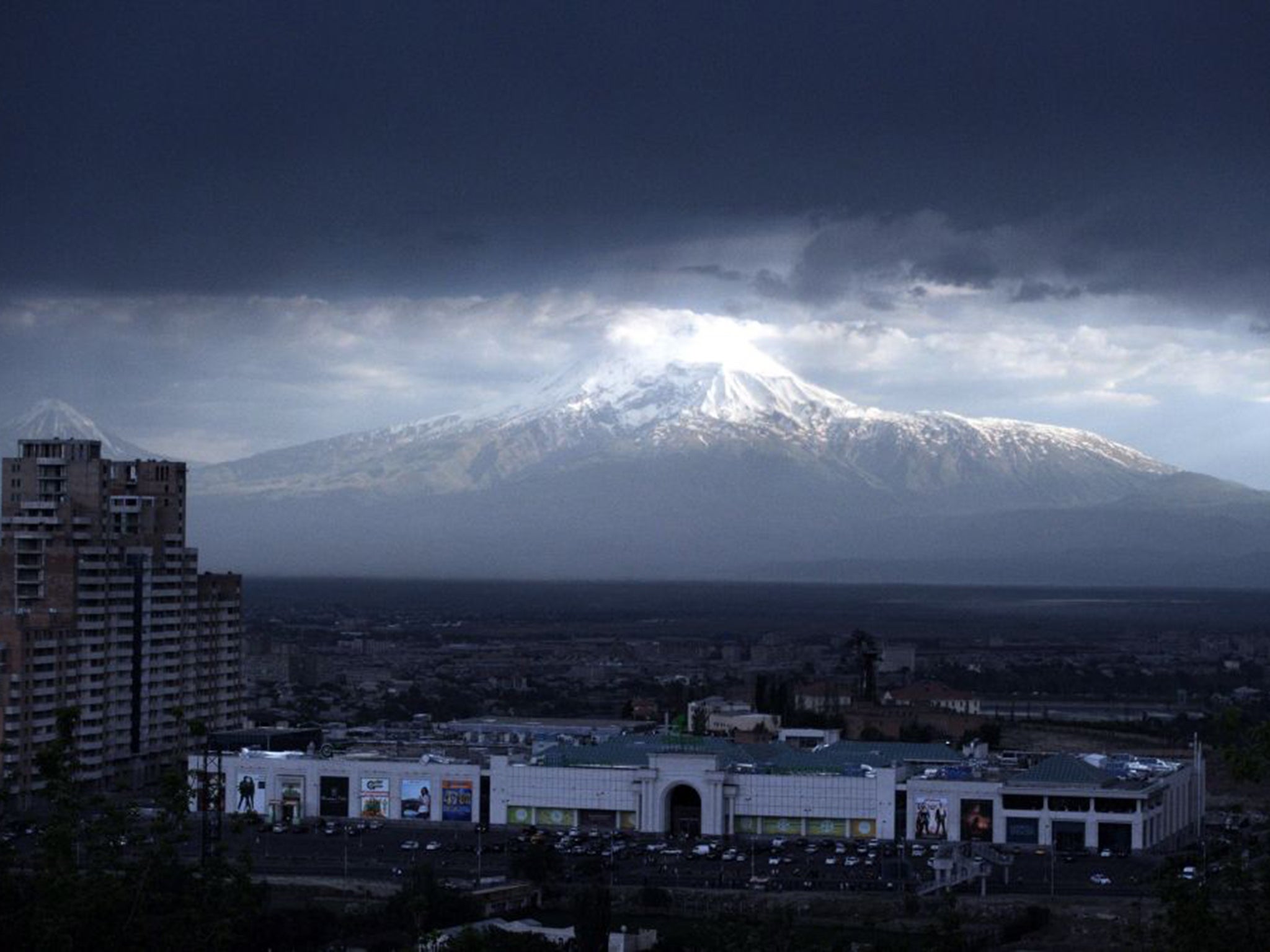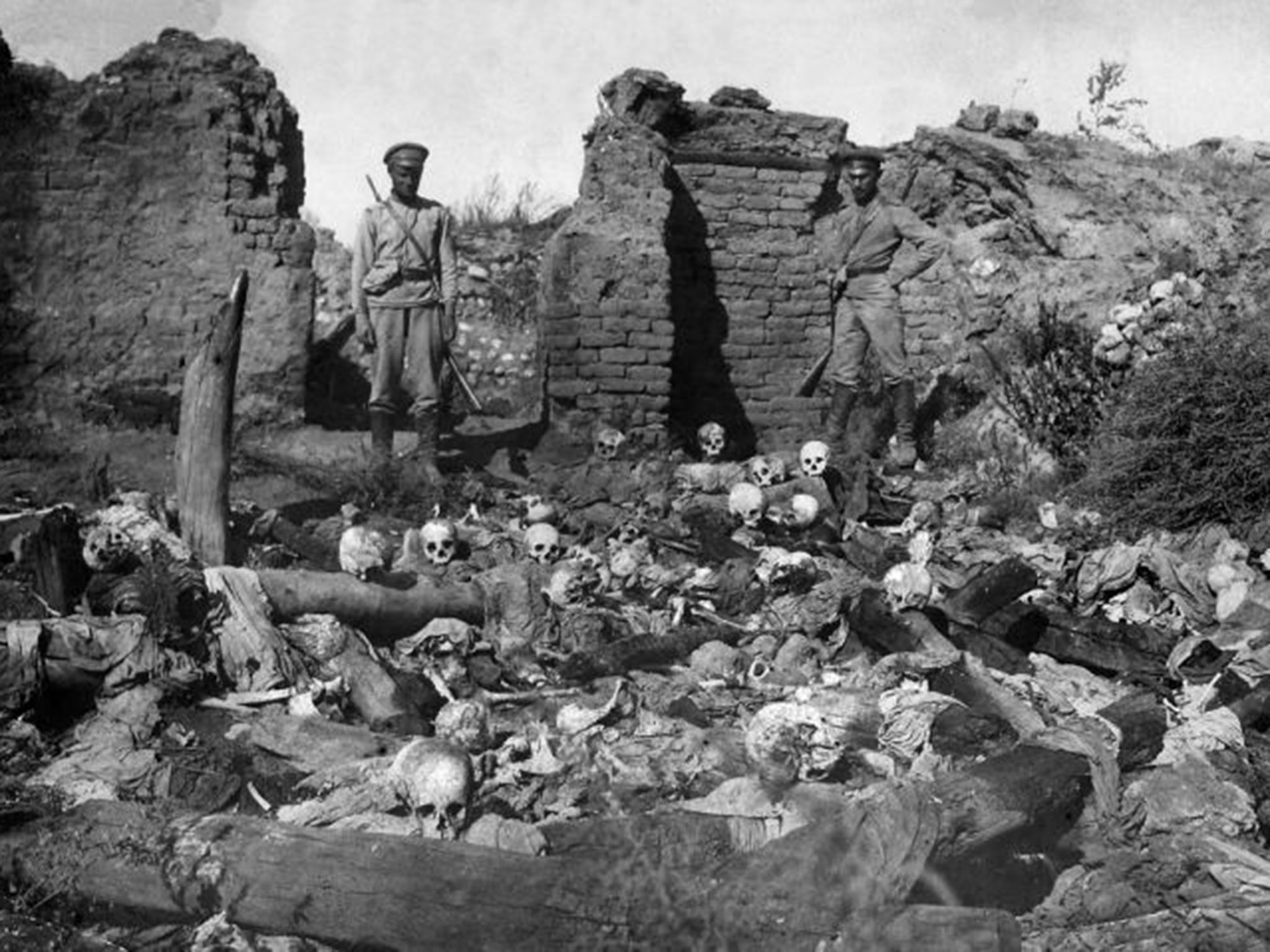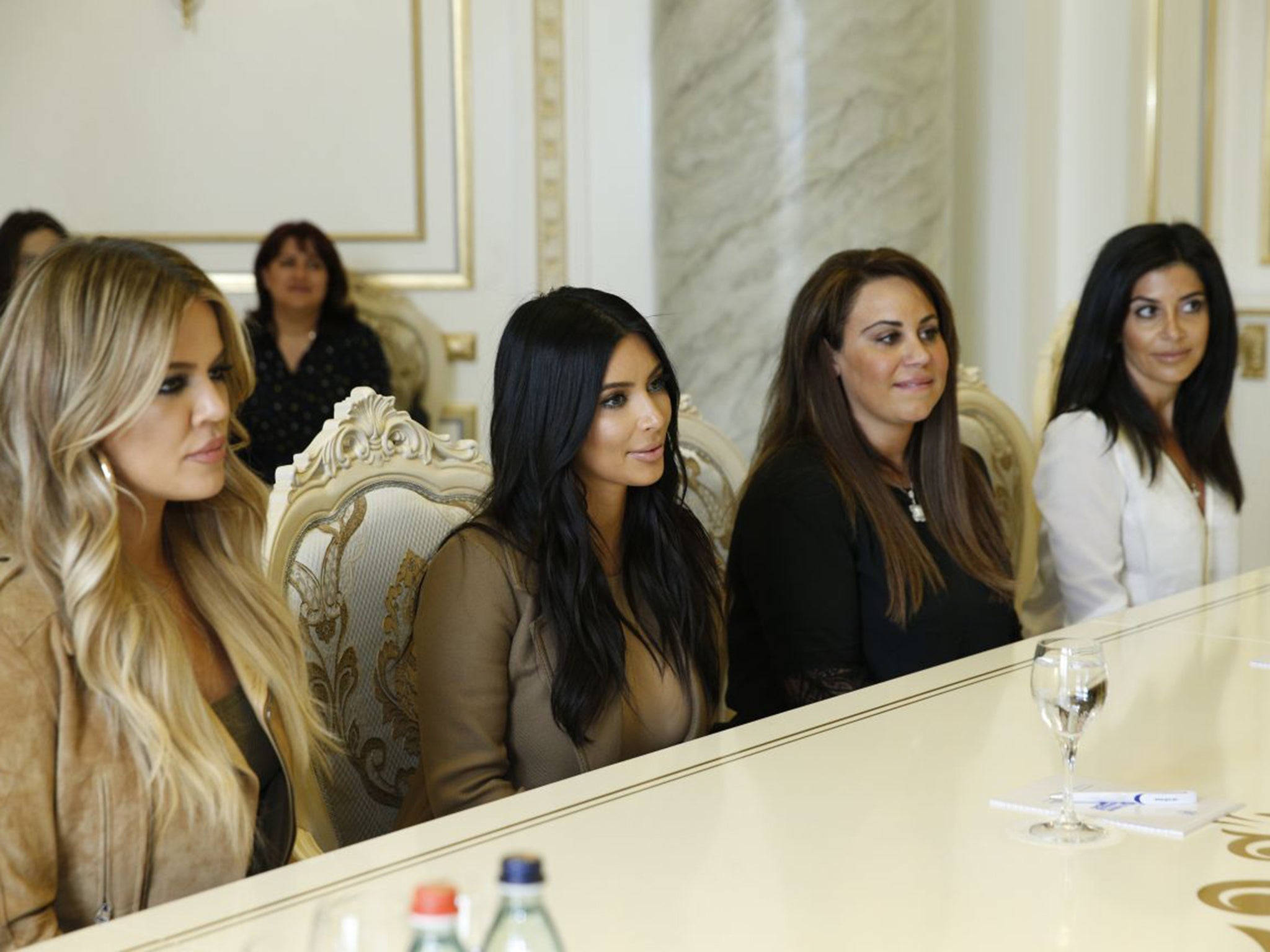Syria conflict: A century after the 'genocide', Armenians flee war and return to land of their ancestors
Thousands of refugees with Armenian roots are returning, hoping to start a new life in the shadow of Mount Ararat. 100 years after the Armenian ‘genocide’, Andrew Connelly speaks to some of the diaspora who have come home

In his flat on the outskirts of the Armenian capital, Yerevan, Hovig Ashjian squints through a microscope as he plucks a minuscule shard of diamond and gently sets it into a silver ring. Originally from Aleppo, the jeweller moved to Armenia when fighting between militants and government forces intensified.
“I came here with nothing,” he recalled. “One day I saw the tanks outside my home and people shouting so I said to my wife: ‘Come on, better run’.”
They raced to the airport in a drive that was normally 25 minutes but took three hours as they navigated the myriad roadblocks. They were just in time to catch what proved to be the last direct plane from Aleppo to Yerevan.
Mr Ashjian is one of around 15,000 Syrians of Armenian descent the United Nations estimates have sought refuge in the country since the Syrian conflict erupted in 2011.
At the end of next week, on 24 April, Armenia – a landlocked former Soviet nation of three million in the South Caucasus region bordering Iran and Turkey – will commemorate the 100th anniversary of the 1915 massacres by the Ottoman Empire of Armenians living in what is now eastern Turkey. Armenia and some other countries consider those events, during the First World War, a genocide that led to the deaths of 1.5 million of their people, although Turkey denies this and disputes the numbers killed. Those not slaughtered escaped, or were marched into the deserts and beyond, and survivors built sizeable communities in Syria, Lebanon and across the Middle East.
Yerevan, with a population of one million, is often called “the Pink city” due to the abundance of rose-coloured volcanic rock used in many of its buildings, adding a flash of colour to the sea of ramshackle Soviet-era apartment blocks.
The crowning glory of the city’s skyline is the snowy peaks of Mount Ararat, believed by Christians to be the final resting place of Noah’s Ark. Its name is omnipresent in Armenia, from football teams to cigarette brands and brandy companies, and is a rallying cry to the global diaspora – made all the more potent by the fact that it is located just inside Turkey, whose border with Armenia has been closed for three decades.
As Mr Ashjian speaks, jets can be heard sporadically whooshing overhead. Russia maintains 3,000 troops at a base in Armenia’s second city, Gyumri, and also provides Armenia’s air defences. “It’s like being back in Syria. Sometimes we wonder if they are coming for us!” says Mr Ashjian with a wry smile. The planes used by the Syrian regime of Bashar al-Assad, sometimes to bomb its people, are mostly Russian built.
Not that everything in Armenia is happy for the refugees from Syria who have arrived. Finding work is difficult in a country with unemployment at 21 per cent; the average wage is just £200 a month.
Even aside from the cultural contrasts, there are language problems for the new arrivals: many diaspora communities speak Western Armenian, a dialect spoken by their ancestors in the Ottoman Empire. Although it is fundamentally the same language deep down, it is heavily influenced by Arabic and Turkish.
For Mr Ashjian, however, it is a cautious but hopeful beginning of a new chapter in his family’s life. “It’s very different because we are in our land, the land of our ancestors,” he said. “We drew pictures of Mount Ararat in school but now we can see it with our eyes. Yes, now it is in Turkey, but it’s a more beautiful view from our side.”

Beneath Yerevan’s stylish Northern Avenue, in a chilly converted garage of block of flats mainly populated by Syrian-Armenians, Ani Balkhian runs the Aleppo NGO. Founded by women from the city, it assists refugees with housing, employment, children’s education and language classes. They keep regular contact with Armenians still living precariously in Syria.
Ms Balkhian and her colleagues recently raised funds for families in Kessab, an ethnic Armenian town in north-western Syria that was attacked by al-Qaeda-affiliated jihadists in March last year. Villagers were kidnapped, churches set alight and cemeteries desecrated. Kessab was previously the scene of a massacre by Ottoman forces in 1915 and there is a widespread view amongst Armenians that last year’s incursion had the assistance, if not direct involvement, of Turkish authorities – claims vigorously denied by Turkey.
“Armenians were happy in Syria,” she said. “Now everything has changed. The culture of killing is inside the people now, so how can you go back, how can you send your children there? We used to dream that someday we would go to our homeland of Armenia, but then we were forced to come here. It’s like a second genocide for us.”
Like all those who fled, Ms Balkhian had to leave most possessions behind. Her home and her family’s textile factories in rebel-controlled areas were looted, she said, and belongings she tried to ship out have been stuck at the Syrian port of Tartus for six months. One item she managed to rescue and transport, a bookcase of carved walnut wood, dominates her office yet stands bereft of books – emblematic of her vanished life back in Syria.

Even so, refugees have begun to transform Yerevan’s cultural life. Its cuisine has been infused with lamajoun (Arabic-style flatbread pizza), and sweet-smelling smoke clouds around pavement cafés as Yerevanites have taken to smoking nargile water pipes. On a Saturday night in an underground cocktail bar, Aleppo-born singer Rena Derkhorenian and her all-Syrian band Shiver blast out jazz and soul rhythms to a writhing crowd.
Ms Derkhorenian thinks the displacement is a chance to build something new. “Syrian-Armenians and the locals still need to integrate more but this was our chance to come here and make something of this land called Armenia,” she said. “A hundred years have passed and now we need to think differently. This is the time to start something, especially when we have all the diaspora coming. We need to make room for each other… and we need to stay.”
Join our commenting forum
Join thought-provoking conversations, follow other Independent readers and see their replies
Comments
Bookmark popover
Removed from bookmarks